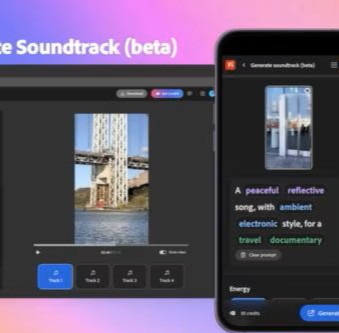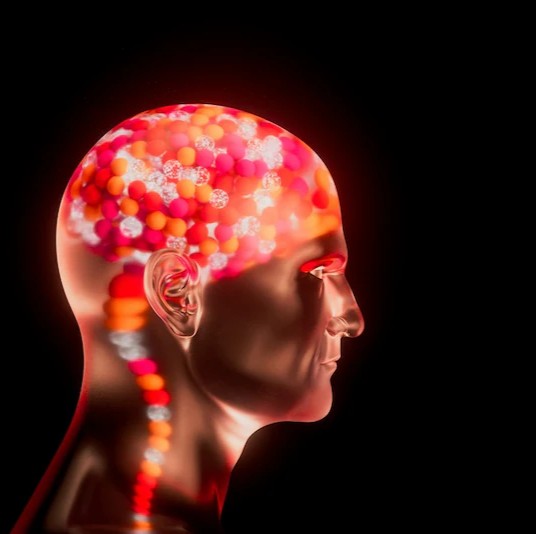1. Setting the stage: Adobe MAX 2025 and the AI push
On Tuesday, October 28 2025, at its annual Adobe MAX creativity conference in Los Angeles, the company revealed a broad line-up of AI-driven features across its ecosystem. The announcements reflect a clear strategic commitment to generative AI for creative professionals — moving from ideation to production, from image and vector generation to full audio and video workflows.
One of the key narratives emerging is how the company is positioning its generative AI tools to be commercially safe — emphasising that its models are trained on licensed or public-domain data, unlike some rivals facing copyright challenges. This framing aims to reassure professional users and organisations that AI-generated content from the platform is safe for production use.
2. Firefly Image Model 5: A leap in image-generation capability
At the core of the announcements is the new generation of the Firefly image tool — Firefly Image Model 5. According to the company, it offers:
- Native resolution up to 4 mega-pixels (and 2 MP) for output, improving fidelity out of the box.
- A layered image-editing workflow: user-uploaded assets or generated elements are decomposed into layers, and users can move, scale or replace components (e.g., moving an object, altering shadows, reharmonising lighting) while maintaining image coherence.
- Prompt-based editing: Rather than manual layer adjustments alone, users can use textual prompts to drive changes — for example “make the sky sunset pink and move the subject left”. This enhances flexibility and speeds workflow.
- Improved rendering of human models and detailed visuals, addressing earlier limitations around faces, lighting, and photorealism.
These enhancements reflect how generative AI is increasingly moving toward production-quality output, including more granular control of composite scenes — aligning with the demands of professionals for higher end use rather than just quick prototyping.
3. Expanding generative media: Audio, speech, video
Beyond images, the company introduced several generative media features that broaden the scope of AI from still visuals to audio-video workflows:
- Generate Soundtrack: A tool where users upload a video clip and the AI predicts and generates an appropriate soundtrack (music) for the length and mood of the clip. The feature supports style and vibe prompts, enabling creators to generate background scores without licensing concerns.
- Generate Speech: A text-to-speech feature that lets users create voice-overs in multiple languages, with emotional inflections and emphasis controls. For example, adding tags to adjust tone part-way through a line. Available in public beta through the Firefly web interface.
- Web-based multitrack video editor: The company teased a browser-based editor under the Firefly umbrella, bringing together generated assets and captured media in a timeline, enabling trimming, sequencing, titles, voice-overs and soundtracks — effectively bridging the gap between ideation and a publishable video package.
These features show the expanding vision of generative AI: not just generating an image or clip, but facilitating end-to-end workflows for creators — from concept to final asset — across formats.
4. AI Assistants and integration across Creative Cloud
In addition to generative content tools, the company is embedding more intelligent assistance into its flagship applications to simplify workflows:
- In applications like Photoshop and Express, agentic AI assistants are introduced — conversational tools that allow users to describe desired edits (“change the lighting to golden hour”, “make the background look like watercolor”) rather than navigating menus
- Integration of generative fill, remove, expand features across Photoshop and Lightroom, enabling users to leverage AI-powered editing directly within their familiar toolset.
- Broad ecosystem integration: Firefly output and models feed into Creative Cloud applications like Photoshop Web, Premiere Pro and Adobe Express, enabling users to move seamlessly from AI-generated assets into refinement, editing, and final production
These developments underscore how the company wants to make AI a seamless part of creative workflows, rather than a separate tool, thereby lowering the barrier for adoption by professionals and creative teams.
5. Commercial safety, model governance and partner models
A recurring theme across the announcements is the emphasis on commercial safety and transparency:
- The company points out that its generative models are trained on licensed or public-domain data and are safe for commercial use — addressing concerns around copyright and legal liability.
- The platform includes features like Content Credentials, a standard metadata tag attached to AI-generated assets to enhance provenance and authenticity of output.
- The company is also opening its ecosystem to partner AI models — for example, models from Google, OpenAI, Luma AI, Runway and others — while offering users flexibility of choice.
By combining in-house and partner models under one roof, while maintaining governance and transparency, the company aims to build trust among professional creators and organisations deploying AI-powered workflows.
6. Implications and outlook for creators and industries
The announcements from Adobe MAX 2025 mark a significant milestone in generative AI for the creative industries. Some of the key implications:
- Higher fidelity AI output: With native 4 MP resolution and layered editing, AI-generated visuals are increasingly suitable for professional use rather than just ideation.
- Workflow integration: Moving from image generation into audio, speech, video and editing tools means creative teams can adopt generative AI throughout their pipeline — ideation, creation, refinement, production.
- Democratisation of content creation: Non-specialist creators (marketers, social media managers, small agencies) can leverage studio-level tools (soundtrack generation, speech, layered edits) quickly, lowering barriers to entry.
- Brand-safe and governance-aware: For enterprises and agencies concerned with IP, licensing and authenticity, the platform’s focus on commercially safe data and content credentials is significant.
- Competitive pressure: As generative AI becomes more embedded in creative workflows, software vendors and tool-providers will face increased expectations for AI-enhanced features and production-ready output.
That said, adoption will likely hinge on price, access, skill-levels, and workflow compatibility. Creatives will still need to refine output, manage expectations, and understand prompt-engineering and asset governance. But the direction is clear: generative AI is no longer an experimental add-on, but a core productivity tool for creativity.
7. Conclusion
With the unveiling at Adobe MAX 2025 of Firefly Image Model 5, layered editing, audio-video generative tools and AI assistants integrated across its ecosystem, the company has signalled a major leap forward in how generative AI can be applied by professionals. By combining high-fidelity output, workflow integration, governance and partner-model flexibility, it’s positioning itself for the next phase of creative technology — one where ideation is powered by AI, production is streamlined, and creators can focus more on vision and less on manual execution. The impact is likely to ripple through design studios, agencies, broadcasters, social-media content creators and even corporate creative teams in the months ahead.
Source:indianexpressGPT







